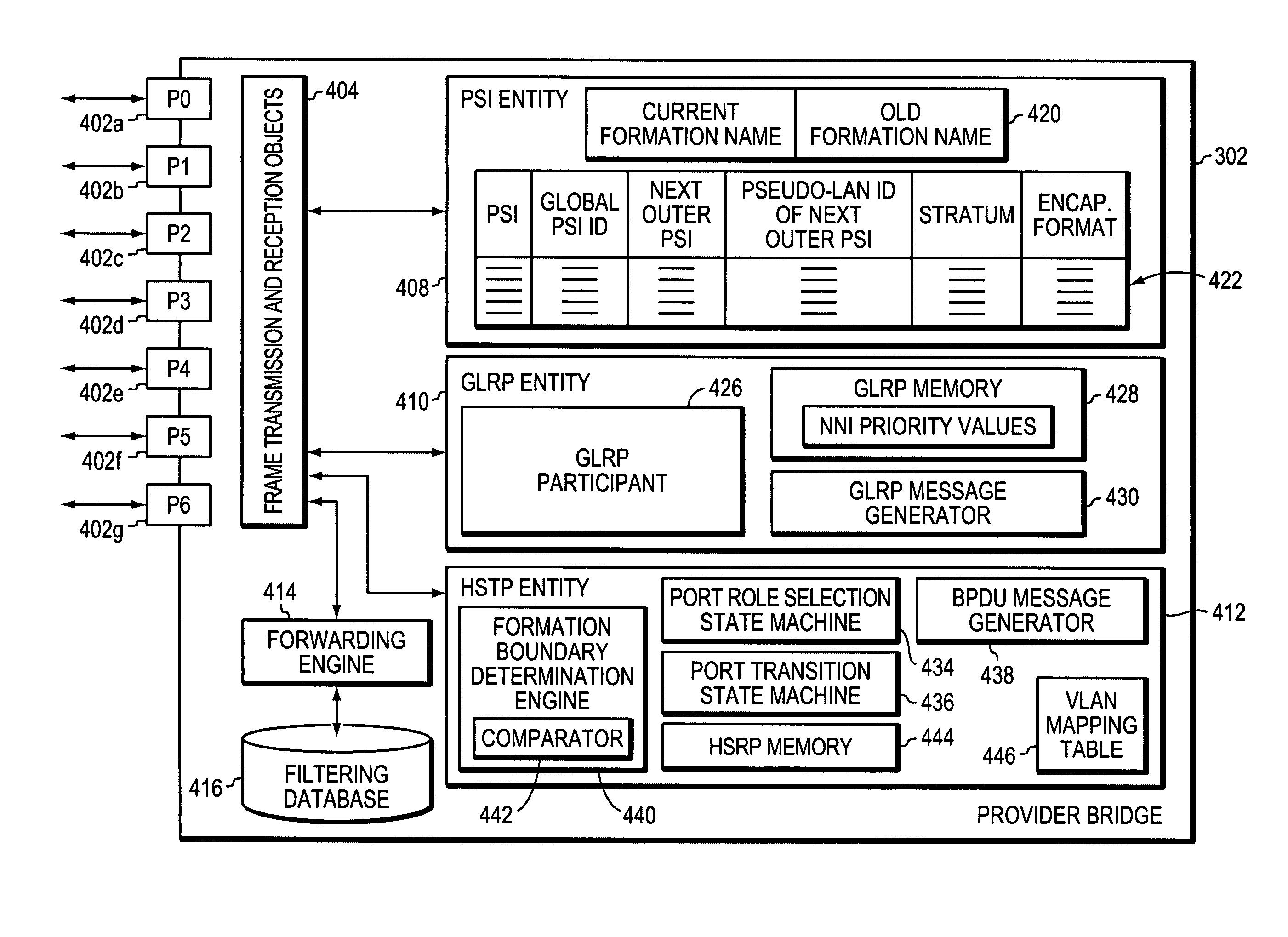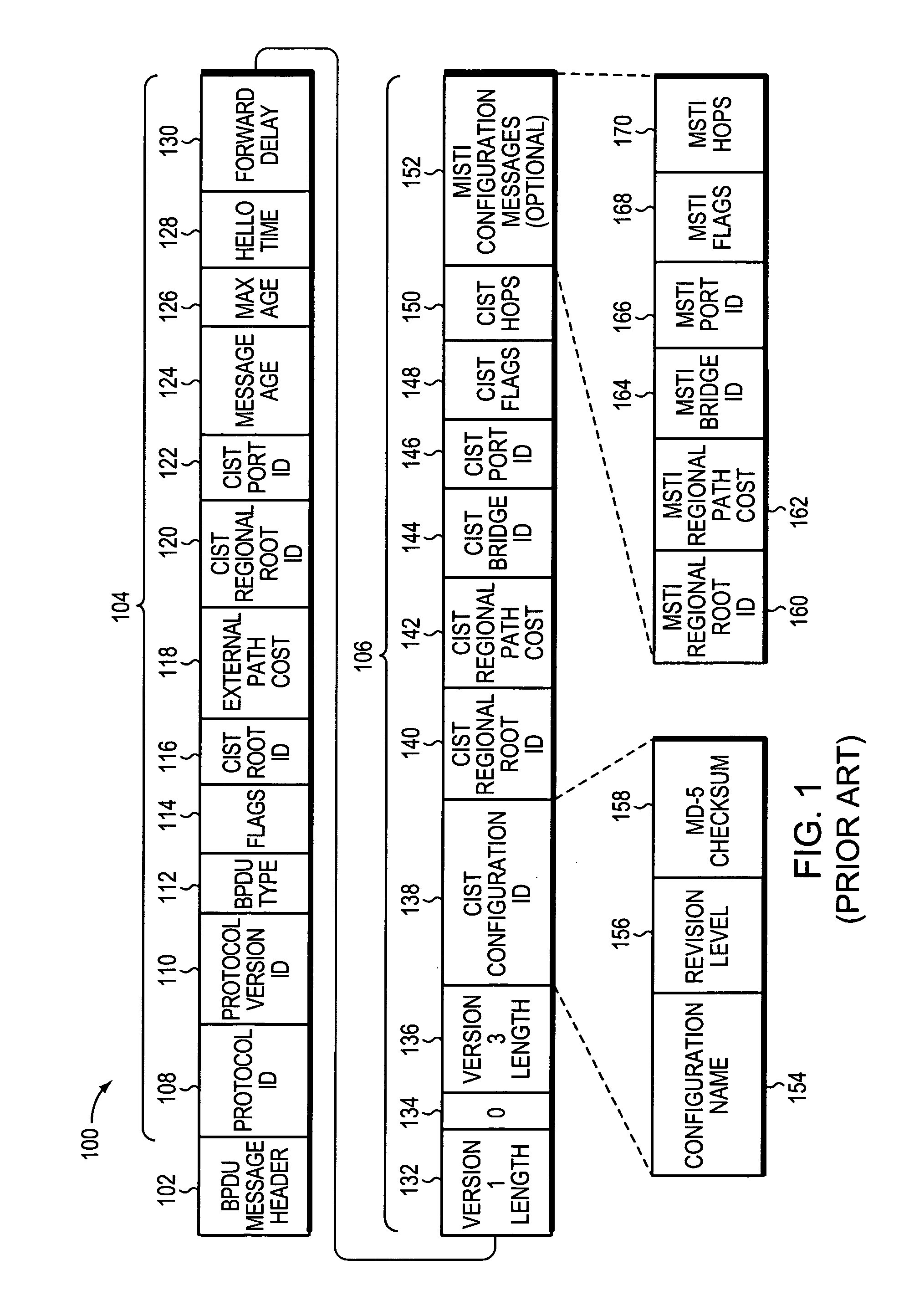System and method for building large-scale layer 2 computer networks
- Summary
- Abstract
- Description
- Claims
- Application Information
AI Technical Summary
Benefits of technology
Problems solved by technology
Method used
Image
Examples
Embodiment Construction
[0050]FIG. 2 is a highly schematic illustration of a large-scale, e.g., “grand”, layer 2 (L2) computer network 200 in accordance with the present invention. The grand network may span a region such as Europe, or an entire continent, such as North America. Grand network 200 is made up of a plurality of formations, such as formations 202-205, which are also identified as formations 1-4. Each formation 202-205 includes a plurality of interconnected Layer 2 (L2) intermediate network devices, such as Provider Bridges. In accordance with the preferred embodiment, each Provider Bridge conforms to the IEEE P802.1ad “Standard for Local and Metropolitan Area Networks—Virtual Bridged Local Area Networks—Amendment 4: Provider Bridges”, the most current version of which is Draft 3.0, Oct. 25, 2004, which is hereby incorporated by reference in its entirety. Typically, each formation is operated by the same administrative entity, and therefore represents a separate administrative domain. Some or a...
PUM
 Login to View More
Login to View More Abstract
Description
Claims
Application Information
 Login to View More
Login to View More - R&D
- Intellectual Property
- Life Sciences
- Materials
- Tech Scout
- Unparalleled Data Quality
- Higher Quality Content
- 60% Fewer Hallucinations
Browse by: Latest US Patents, China's latest patents, Technical Efficacy Thesaurus, Application Domain, Technology Topic, Popular Technical Reports.
© 2025 PatSnap. All rights reserved.Legal|Privacy policy|Modern Slavery Act Transparency Statement|Sitemap|About US| Contact US: help@patsnap.com



